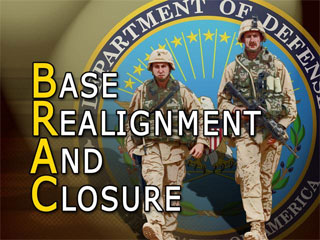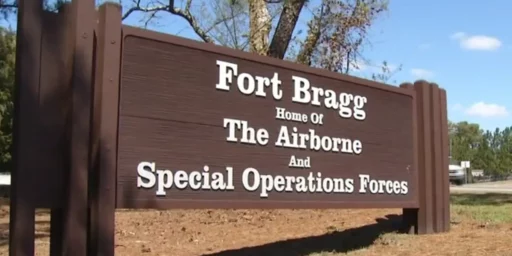BRAC, Ft. Belvoir, and Northern Virginia Traffic
Virginia Congressman Jim Moran argues that the Defense Department ought to step up and pay for the increased traffic BRAC is about to bring to his district:
The latest round of BRAC (Base Realignment and Closing) moves is poised to create a daytime nightmare of traffic congestion for Northern Virginia.Over the next two years, the on-base population at Fort Belvoir in Fairfax County will double, to more than 47,000 people. In a location difficult to reach by bus and impossible by rail, the addition of approximately 24,100 personnel is poised to grind the region’s already notorious traffic — consistently ranked second-worst in the nation — to a halt, adding hours of backups on Interstate 95 and Route 1.
This outcome could be avoided, or at least mitigated, if transportation upgrades were part and parcel of the BRAC relocations. Unfortunately, the Office of Economic Assistance, the Defense Department agency that is responsible for aiding communities affected by BRAC, can only help hire planners and consultants to perform studies identifying infrastructure needs, not fund the projects they identify. At Fort Belvoir, they have done neither.
The other way to meet federally imposed transportation needs is through the Defense Department’s Defense Access Road program. The program can and does pay for roads in communities affected by BRAC, but only if the projects meet very narrow criteria. One such requirement is that traffic on any given roadway must double because of specific federal activity, measured over 24 hours. But when the “roadways” in question are I-95 and Route 1, the principal north-south highways on the East Coast, this is an impossible qualification.
The Pentagon’s narrow application of Defense Access Road eligibility, however, is not what Congress intended. The program was created to provide a means for the military to pay its fair share of the cost of highway improvements related to the post-World War II buildup of domestic military installations.
Presumably, the point of the op-ed is to get recognition from his constituents for fighting this fight. As a practical matter, there are two U.S. Representatives directly interested in this issue (Full disclosure: I’m in the neighboring Congressional District and the Fort Belvoir/Rt. 1 corridor is quite literally the dividing line) and several other Representatives and United States Senators live in the area and are personally effected by this issue. I’m actually befuddled that they haven’t stepped in before now, since the BRAC announcement on Fort Belvoir came out several years ago.
Moran’s argument is rather weak, however:
It’s common sense for the military to help pay for these improvements. For our men and women in uniform, and the civil servants and the contractors who assist them, time spent in traffic is time not spent providing for our country’s national security.
That’s not how it works. These people will have to put in as much time as it takes to do their job and then waste a lot of time sitting in traffic. The more logical response to the traffic issue, frankly, is that Fort Belvoir should be closed and its activities moved to a larger base in a much less densely populated area. It would be much cheaper for the taxpayer and provide an economic boom for some part of the country that almost surely needs it more than the National Capitol Region.
Since that appears not to be an option — indeed, the Powers That Be are doubling down on the base — then it seems perfectly reasonable to have the DoD pay a large part of the cost of transportation upgrades (perhaps extending the Yellow or Blue Metro lines to Belvoir, a Rt. 1 bypass, or the like rather than simply widening Rt. 1 as Moran suggests). Then again, since I’d directly benefit from this (my house is less than 1/4 mile from Rt. 1 and less than 3 miles from Ft. Belvoir) my analysis is biased.




The lesson from 9/11 is that we need a more distributed workforce to survive attacks. BRAC does the opposite and relocates georgrahically disparate units and organizations and put them all in one central location where a single hit can take out much of its functions. Smart!
I understand the economics of consolidation. But it makes sense to take small bases and depots and relocate them to large maneuver bases like Bragg and Benning and Hood, where they will make very little impact and could conceivably even add to a combined arms training approach.
But moving more crap to the DC area is just epically stupid. It’s expensive, adds to congestion and, as you say, makes it an even better target for terrorists.
How about moving about 90% of the federal government to Nebraska? Land is cheap there and it would help reduce the congestion you are highlighting there. When one considers the cost of recently upgrading the Beltway, this doesn’t sound like such a bad idea. By the way, have they finished the Beltway upgrade yet?
Sorry, in the last comment in direct contradiction of Gertrude Stein there are one too many there’s there.
First thought – Virginia will continue to pull in massive amounts of tax money from the folks at that base. If Virginia can’t figure out how to spend this money to improve transportation, that’s their fault.
Second thought – there’s expected to be huge savings from this realignment because it’s replacing a number of daily courier runs, encrypted comm lines, and duplicate huge data stores. Those are features of living in this area, and relocating them to somewhere in a rural swing state will just create other issues – ones most people won’t be allowed to know about, but issues.
I’m pretty sure we had this same discussion in 2005 here when the BRAC list first came out (a quick search didn’t find a link and I’m on slow internet again this week). There are some losers, some winners, and some losers that look like winners in the BRAC game. I know we talked about the traffic cluster going into Belvoir, and how the GS-6/7 living in DC just couldn’t get there on public transit.
What you have is the bright idea to take everyone out of Crystal City (all services, except maybe USPHS) in Smith rental buildings and put them in government buildings on Ft Belvoir. Back in the Carter era, the bright idea was to stop government construction, and put everyone into GSA rented buildings (for DoD, Crystal City – but what about all those other Departments in rented buildings?).
Belvoir is mostly a support base. Of course it isn’t a Division base full of troops. But it gives the President a place to golf at in secure status, along with Andrews AFB (snark). Plus housing, MWR, commissary, etc.
Many of the folks moving to Belvoir need to be in the DC area and will waste MANY hours getting into DC and to the Pentagon for routine functions. When I was in Crystal City, probably 10% of my time was spent on the miserable DOD shuttle buses, and the number was higher for my boss.
Sometimes there are synergies, or can be synergies. All the CI folks are supposed to be at Quantico per BRAC. Then again, you can destroy CI as they are in a Pearl Harbor situation.
This made me look at the old BRAC posts from 2005. I wonder if there has been a recent follow-up anywhere. Redstone Arsenal? Great Lakes NTS, etc?
Disclaimer: I too used to live off Richmond Highway (US-1) and can’t see it handling the traffic.
Most of the military personnel have a home of record somewhere else, usually a no state income tax state. And many of the civilian personnel will live in DC or Maryland. They’re not going to pay enough Virginia taxes to solve this problem.
Oh, and then there’s the fact that the tax money goes to Richmond, which seems not to grasp that NoVa isn’t a rural area and that we bring in a disproportionate amount of tax revenue.
But you and Richard make some good points about the synergies of the area. I’m skeptical that the constant face-to-face meetings at the Pentagon are vital but it is what people have gotten used to.
From a tax vs. services issue, anybody who works at a tax-exempt employer is a loser for the area in question (a net cost). I suppose there are those who think they’ll make it up in volume or something.
All the DoD offices were moved out of Crystal City because they can’t meet the new DoD requirement to have 150 ft. standoff distance from vehicular traffice due to fear of VBIEDs.